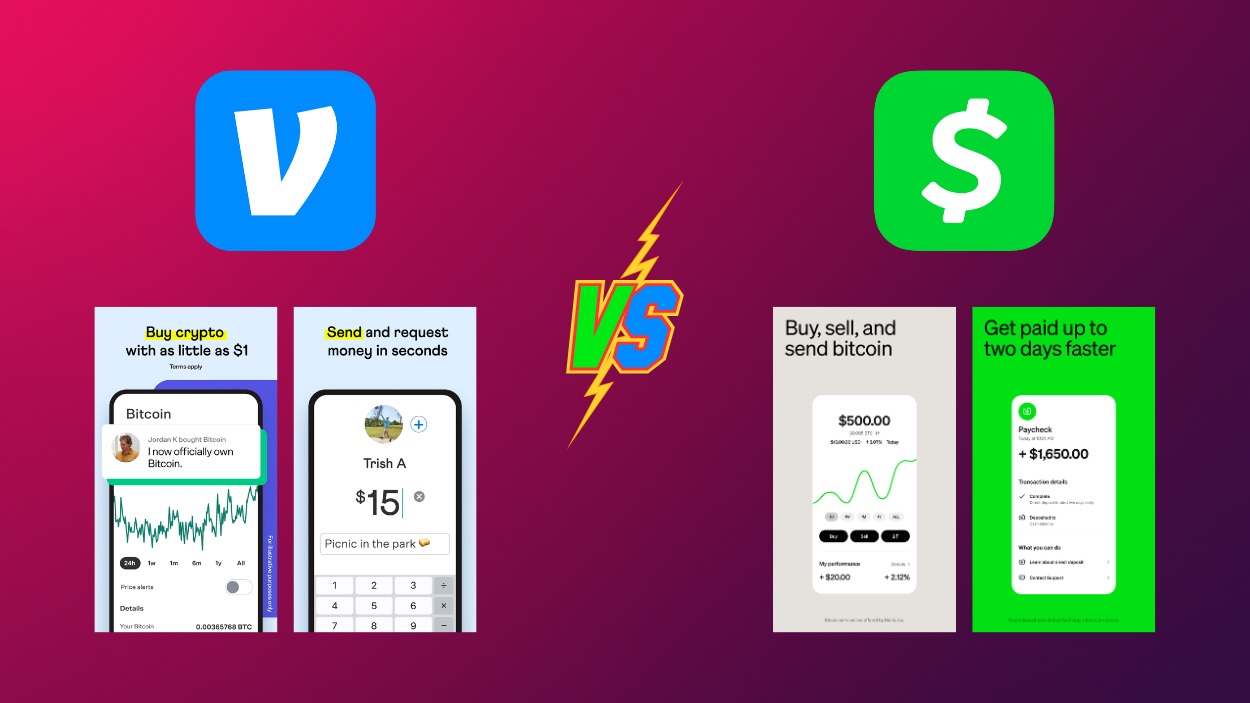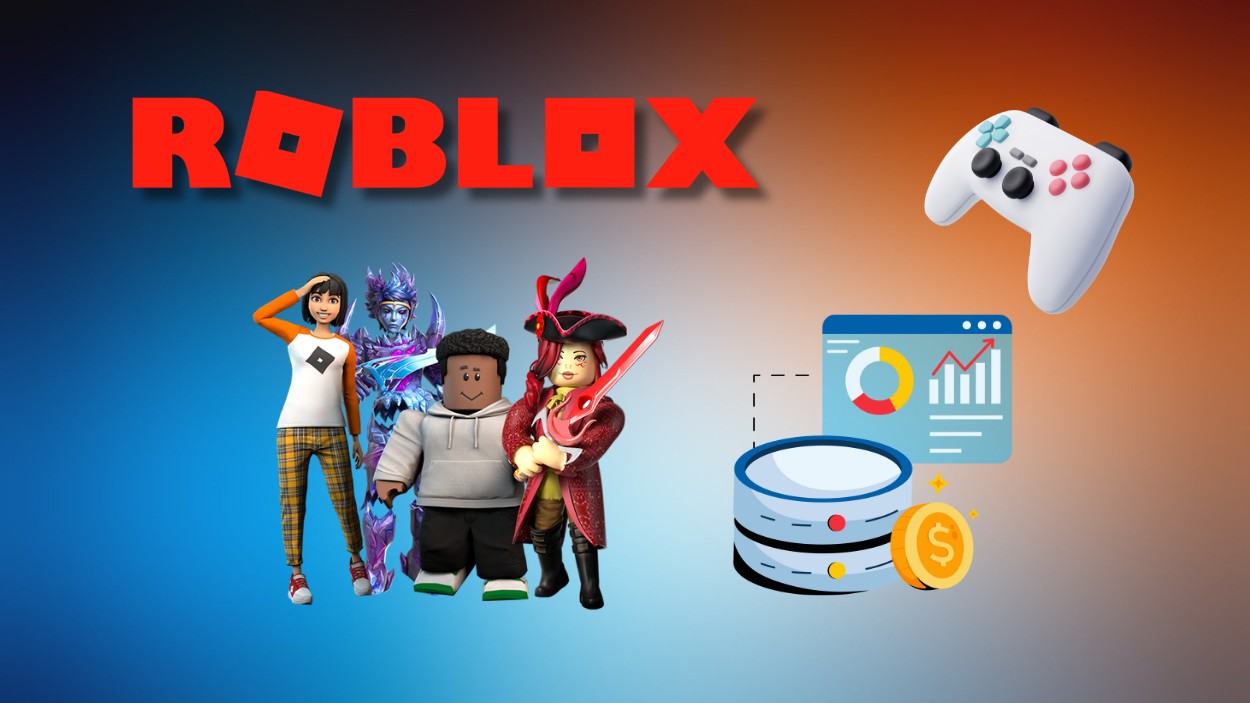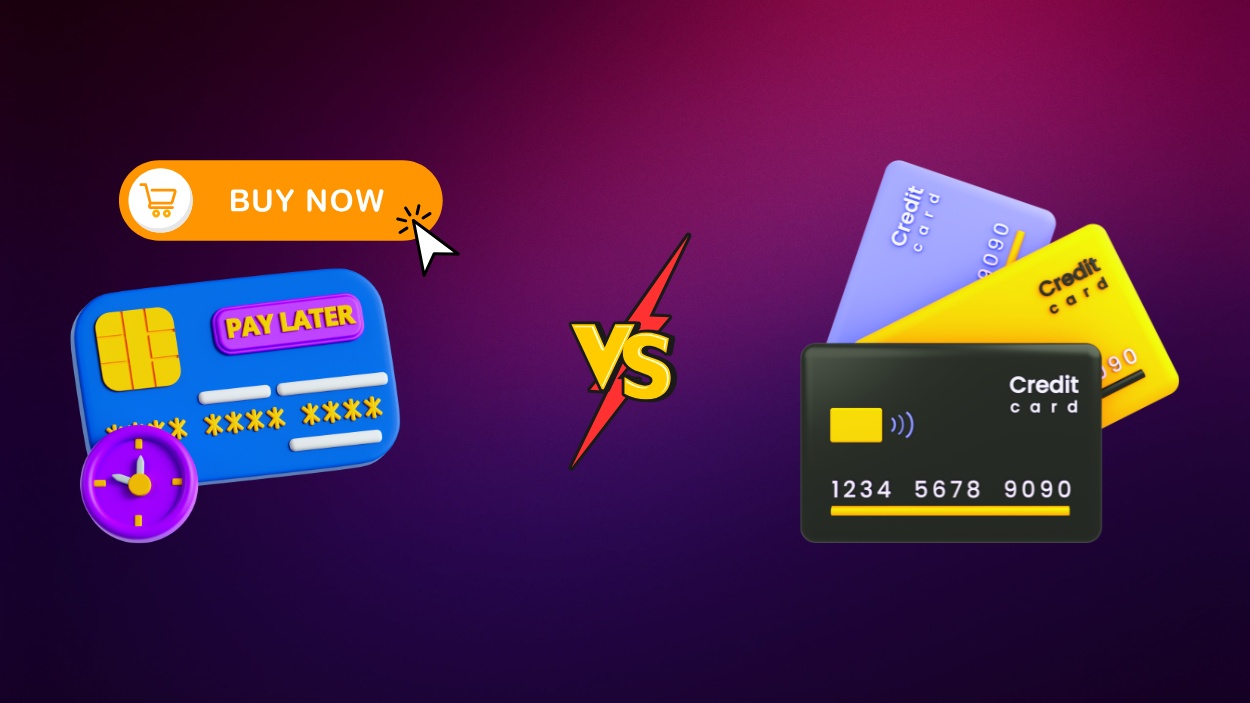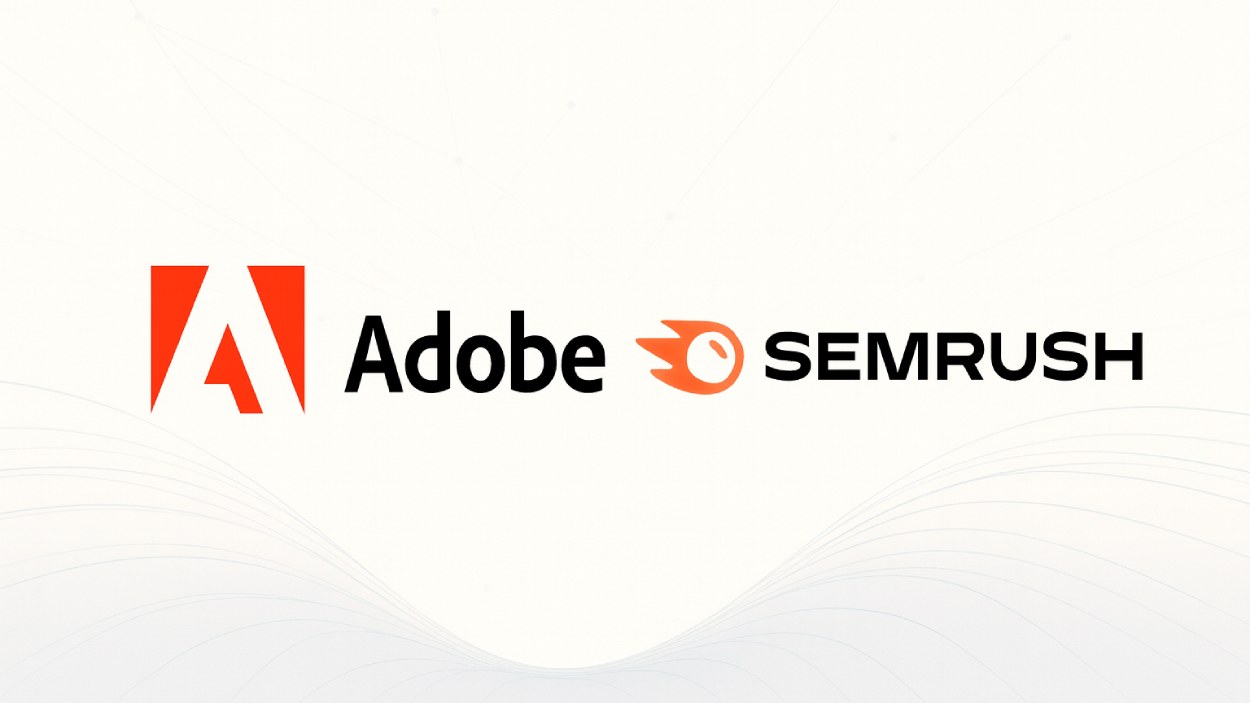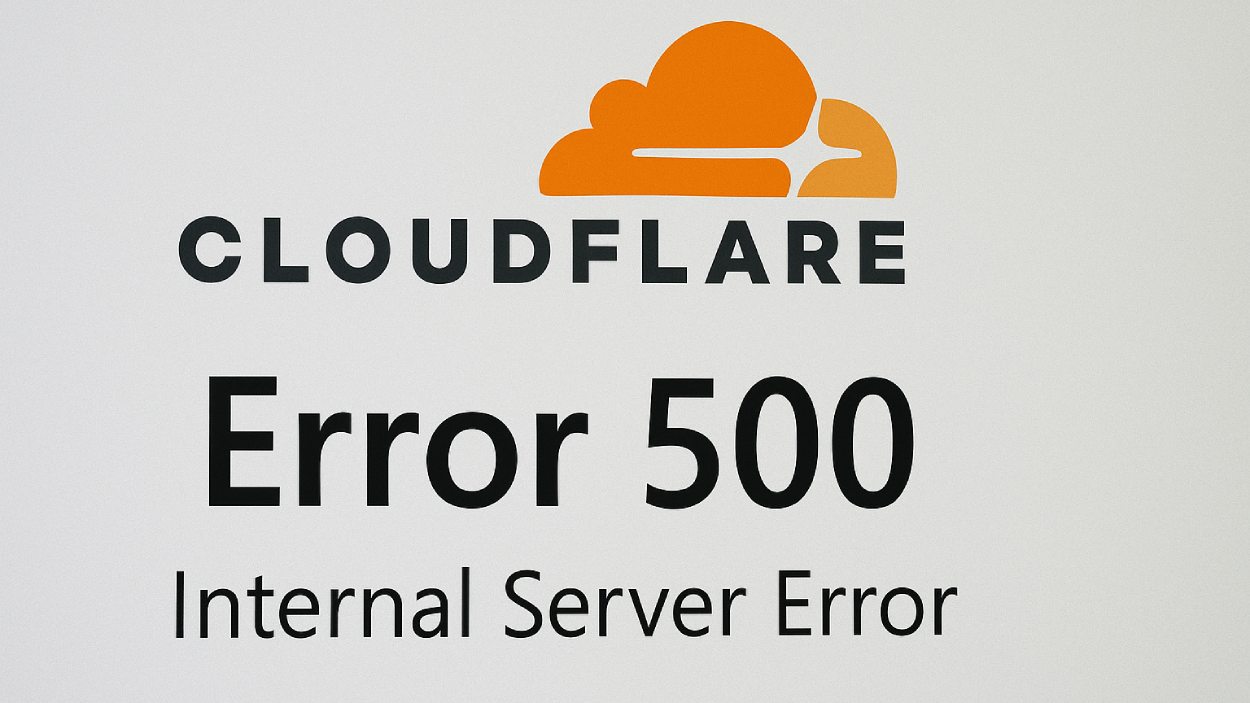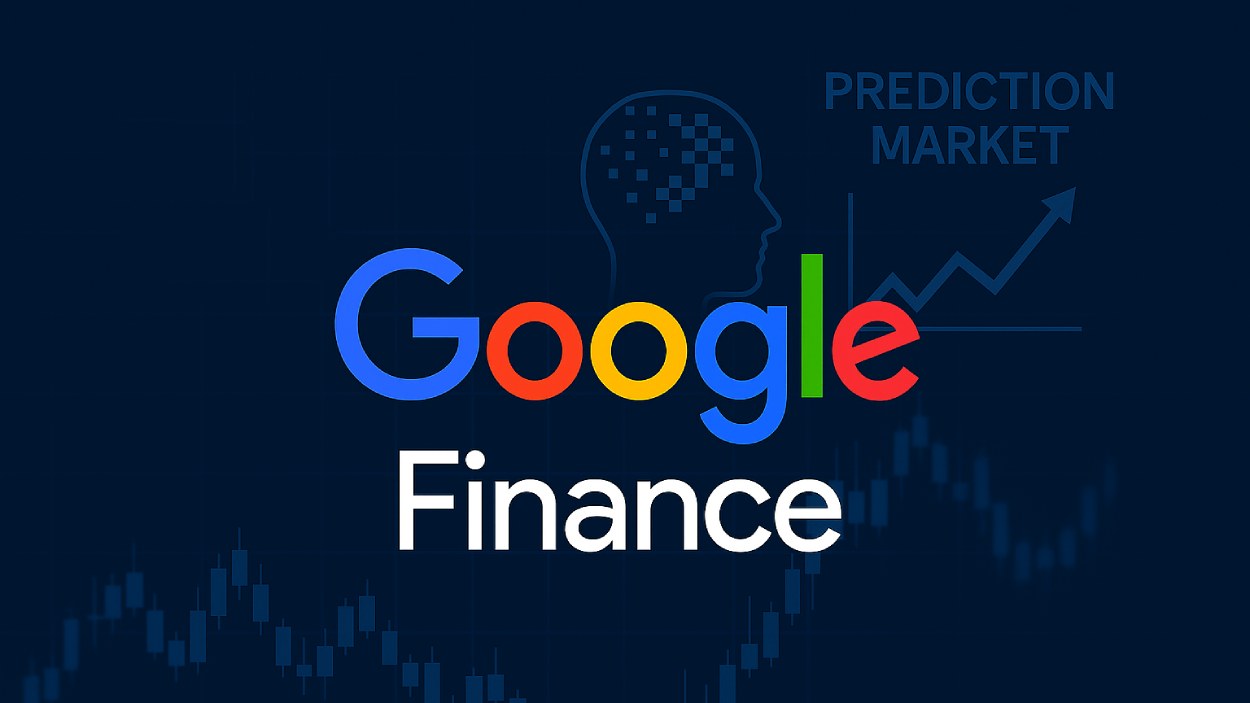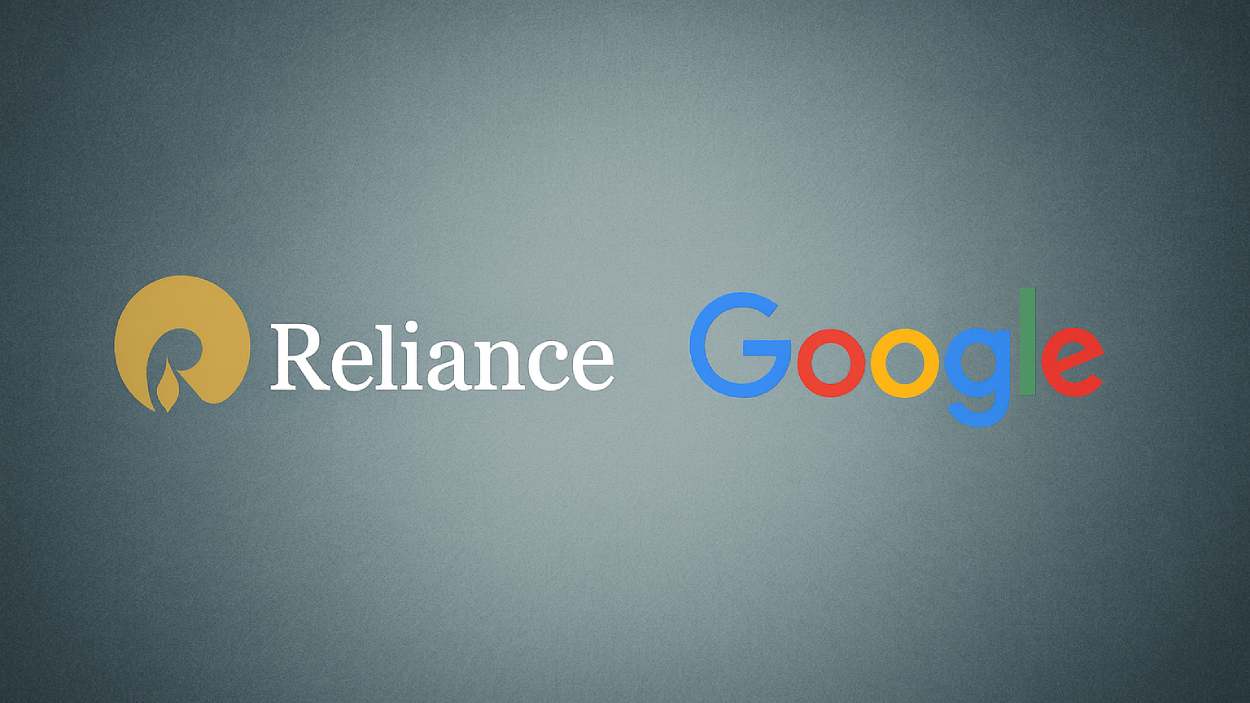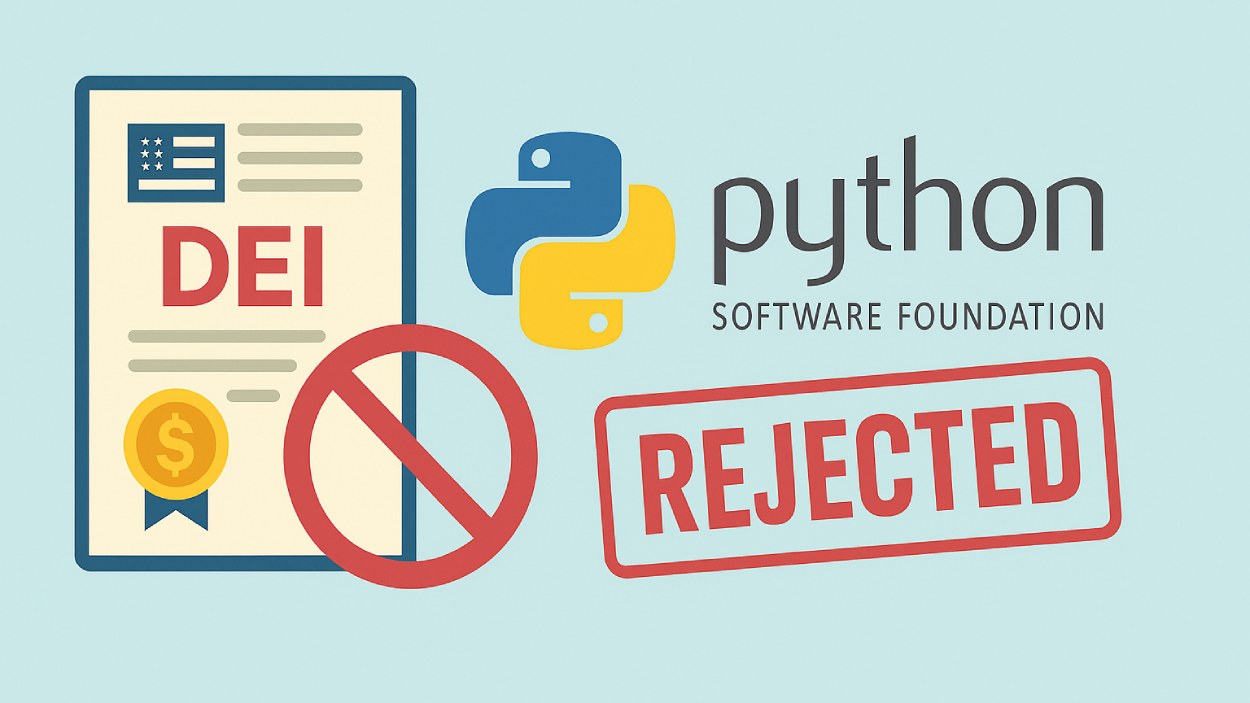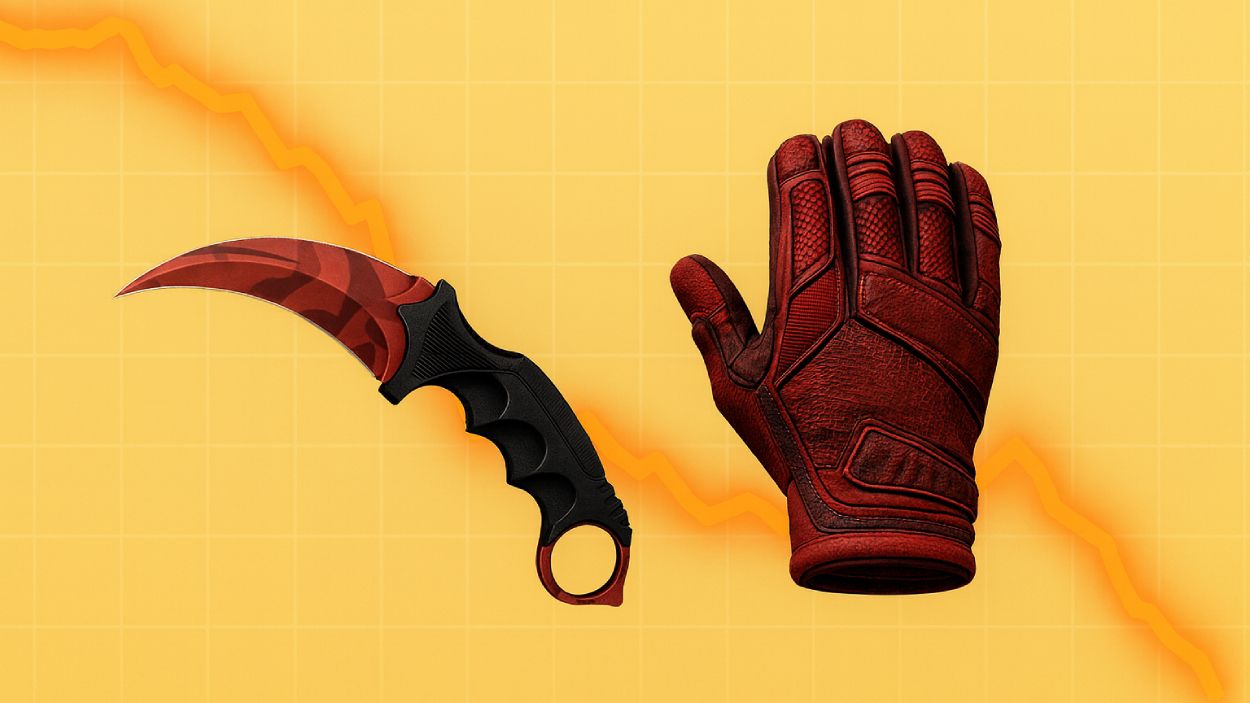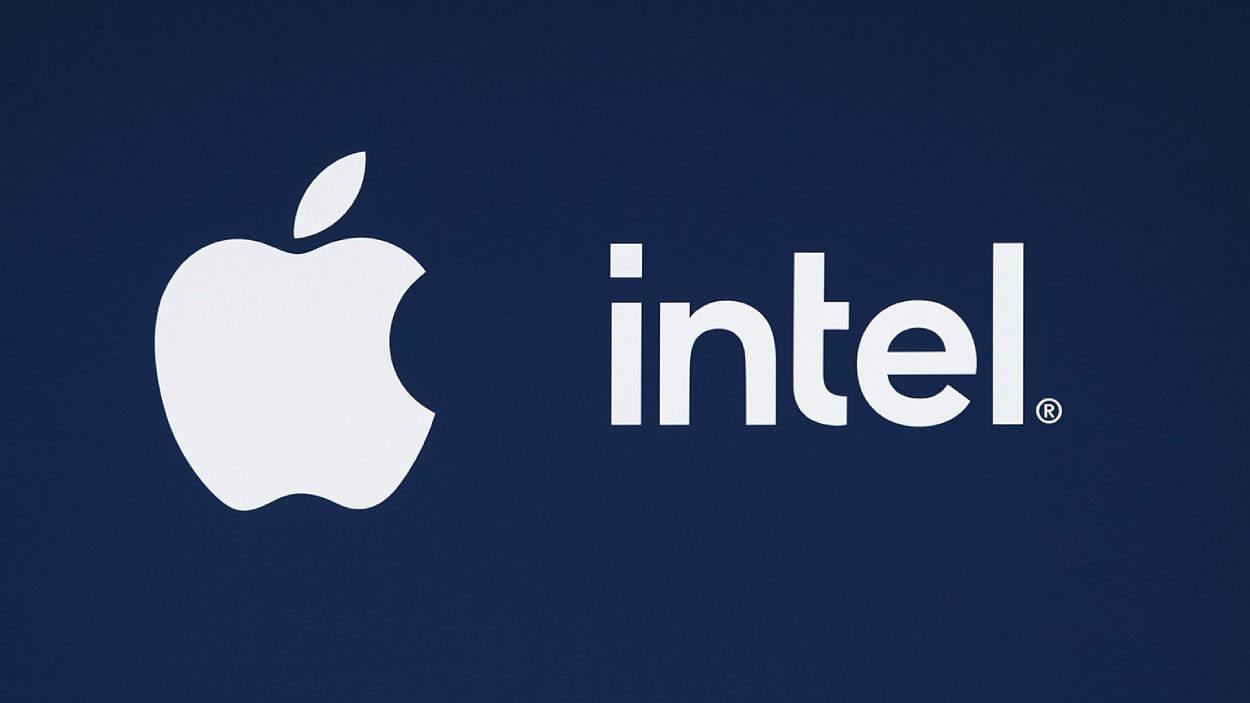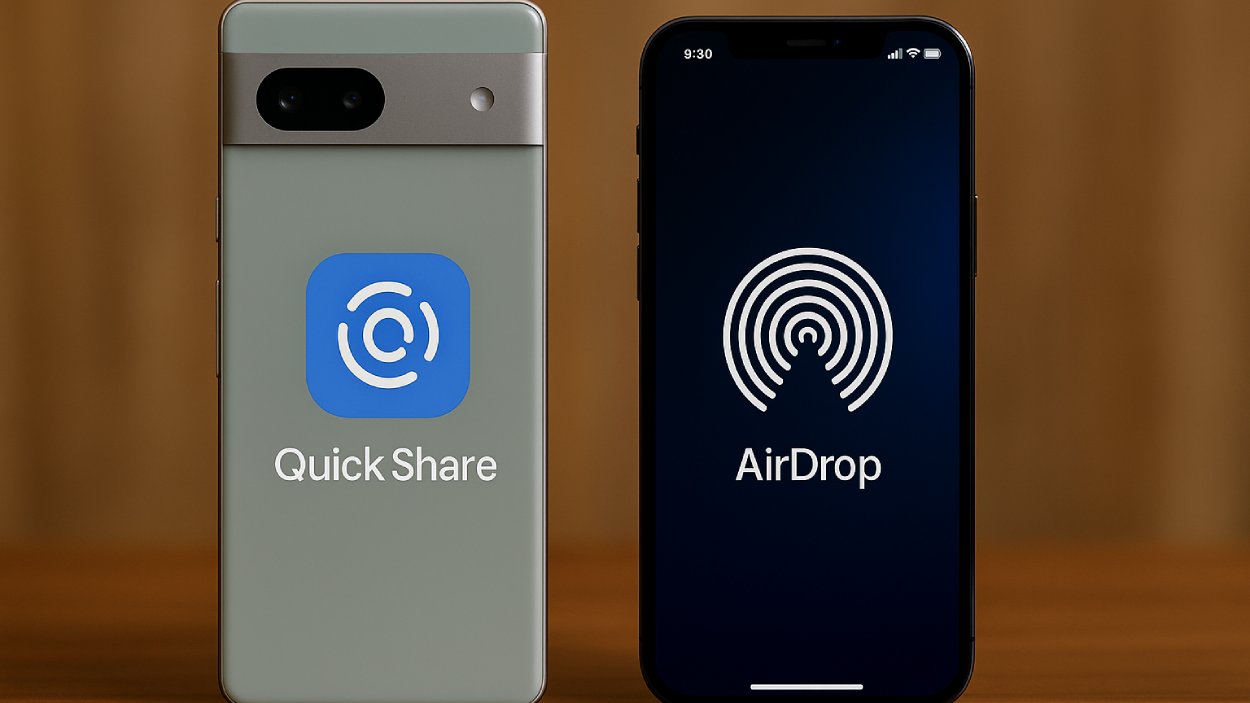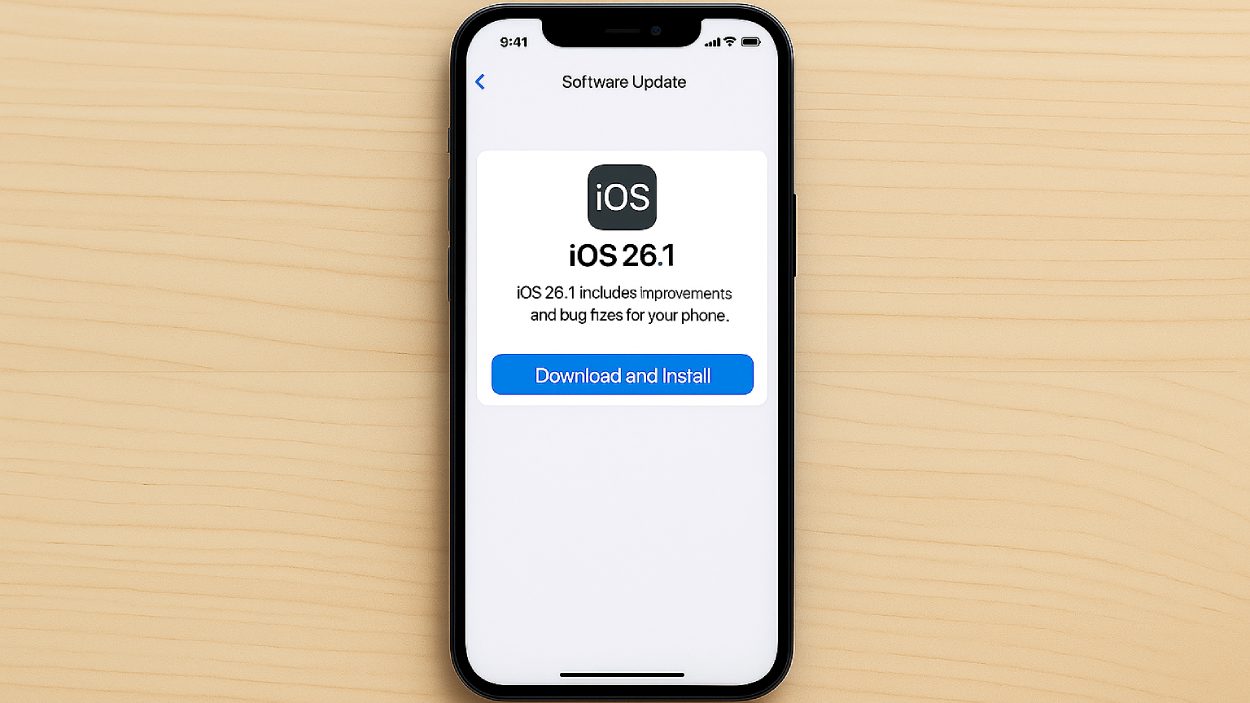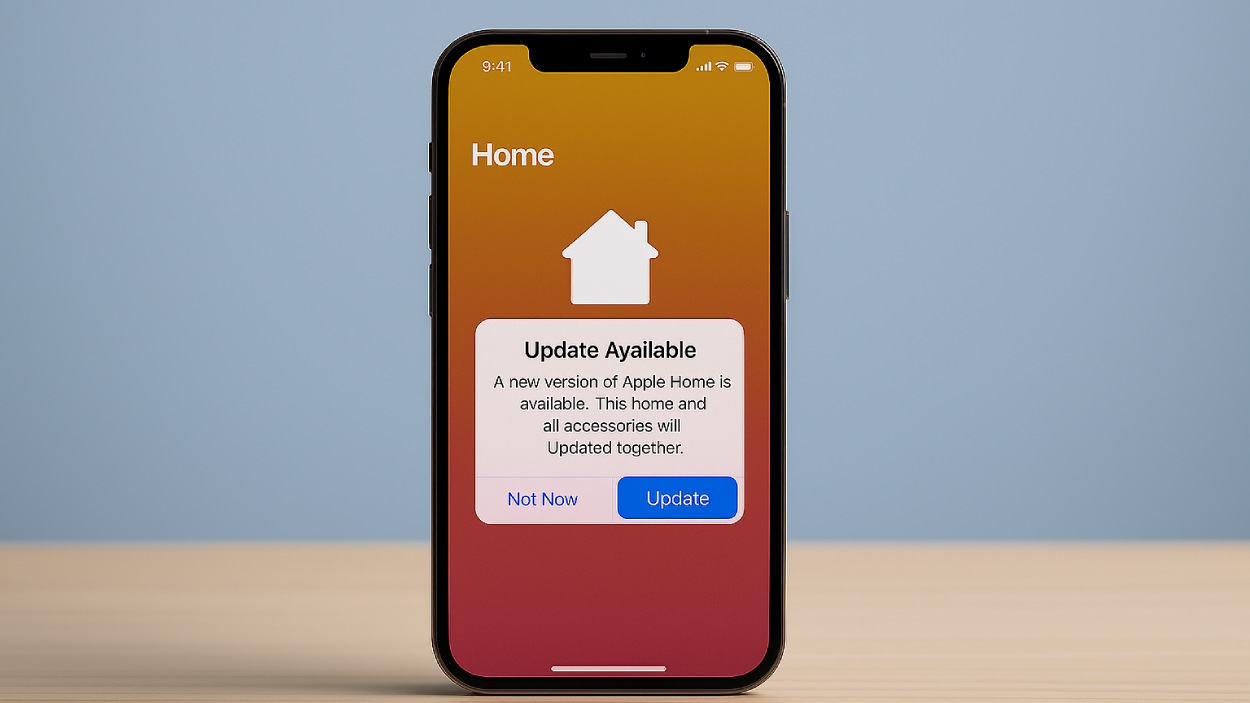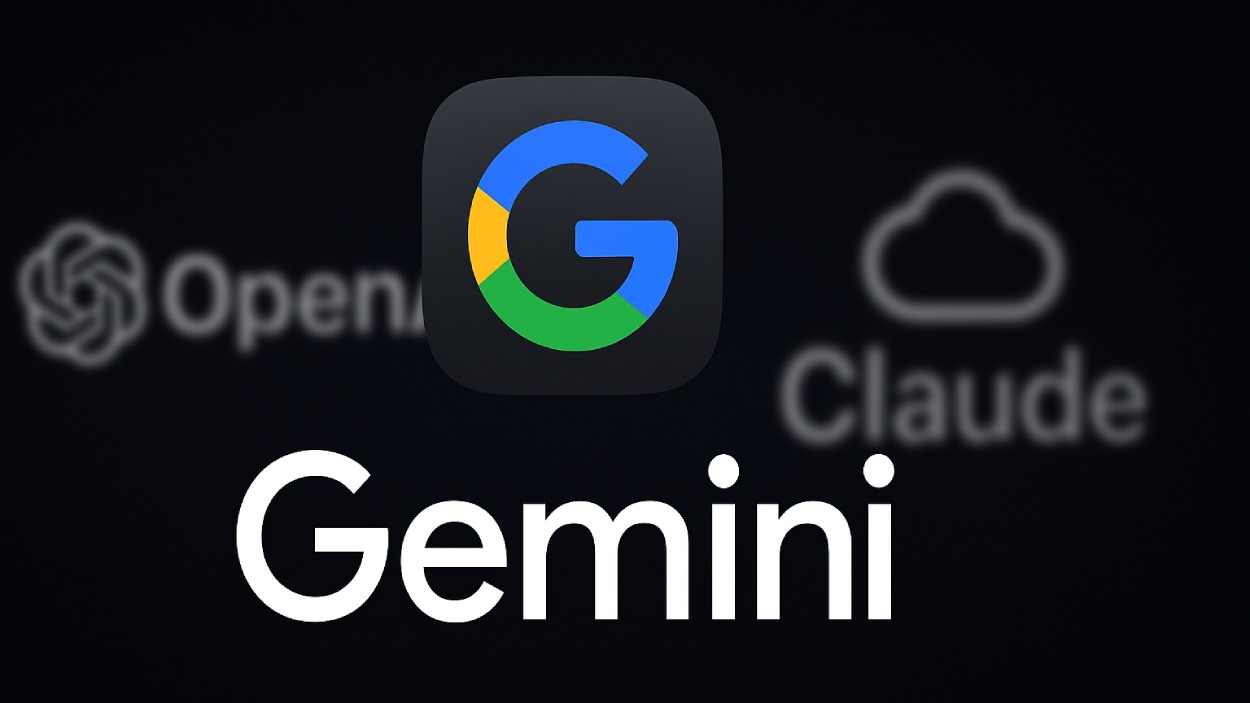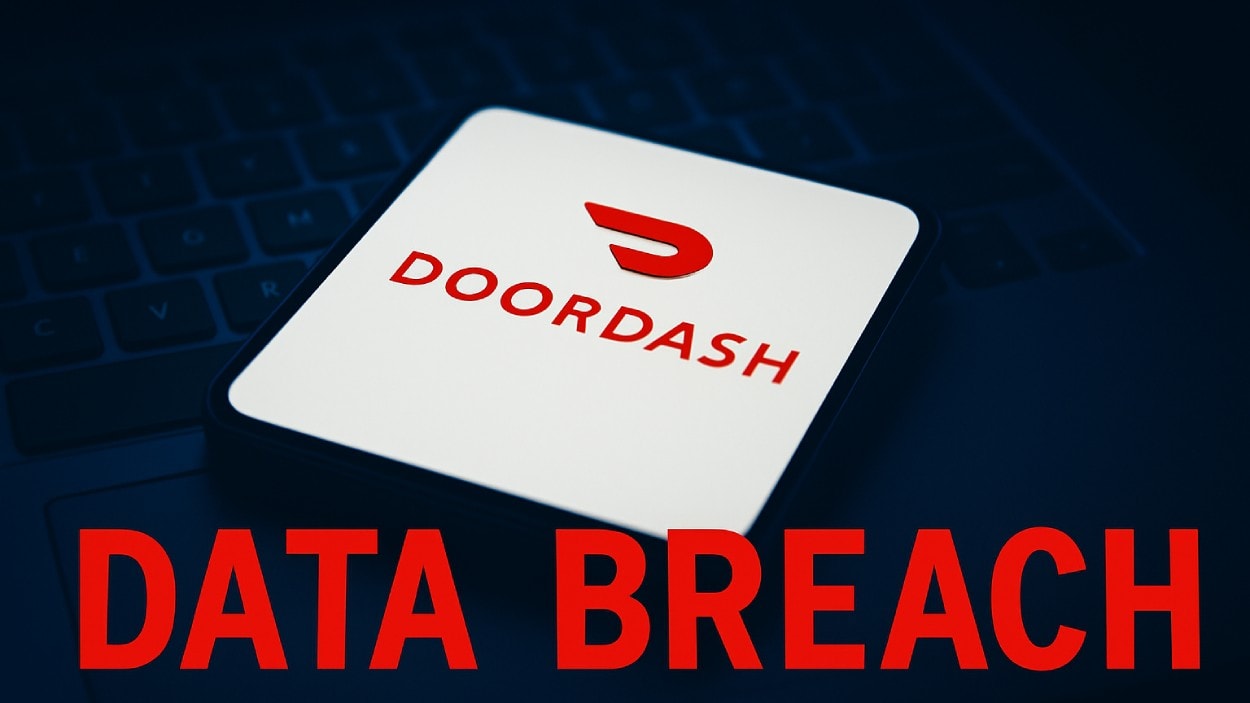When Maya launched her handmade jewelry business, she poured hours into perfecting her craft, but her online sales stalled. One day, she filmed a simple 60-second product demo on her phone, posted it on social, and forgot about it. Within a week, that video had brought in five times her average daily sales. That’s the power of video marketing in 2025.
In today’s content-saturated digital landscape, video is no longer optional, it’s the preferred language of the web. Whether it’s a short-form clip on TikTok or an in-depth explainer on YouTube, video continues to drive attention, engagement, and revenue across nearly every industry.
Editor’s Choice
- 91% of businesses now use video as a marketing tool in 2025.
- 85% of marketers say video delivers a strong ROI, a steady rise from 78% just two years ago.
- Short-form videos (under 60 seconds) are rated the most effective content type by 67% of marketers this year.
- Vertical video formats now account for 72% of social video uploads, driven largely by TikTok and Instagram Reels.
- Companies using video on landing pages see 34% higher conversions than those using static content.
- 72% of B2B buyers say they prefer to learn about a product or service through video over reading text.
- The average U.S. consumer spends over 19 hours per week watching online video content.
Most Effective Video Lengths for Marketing Success
- 39% of marketers say videos that are 30–60 seconds long are the most effective for capturing attention and delivering value fast.
- 28% prefer videos that run between 1–2 minutes, offering more room for storytelling while retaining viewer interest.
- 18% believe that short videos under 30 seconds are still impactful, especially for mobile users and quick product teasers.
- 10% of marketers find 2–3 minute videos effective, likely for explainer or testimonial content.
- Only 5% say that videos lasting 3 minutes or more are most effective, highlighting a shift toward shorter, more digestible content.
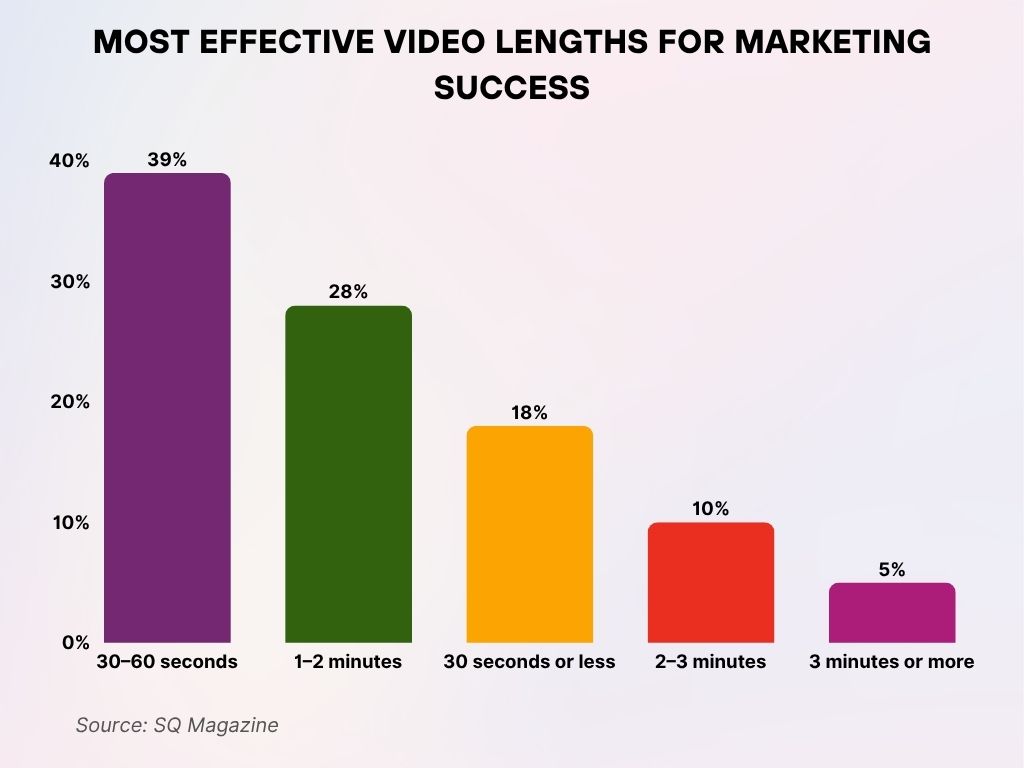
Global Adoption Rates of Video Marketing
- As of 2025, 92% of global marketers report using video in their digital strategy.
- Adoption among small businesses worldwide grew to 81%.
- In Asia-Pacific, video usage rose by 11% year-over-year, led by mobile-first markets like India and Indonesia.
- European marketers report a 78% satisfaction rate with video marketing performance.
- North American brands allocate 41% of their digital marketing budget to video, more than double the allocation five years ago.
- Live streaming adoption has jumped to 63% globally, thanks to platforms like YouTube Live, Twitch, and TikTok LIVE.
- Brands in Latin America saw a 57% boost in engagement after integrating regionalized video content.
- The Middle East and Africa experienced a 39% increase in video content creation, fueled by mobile broadband expansion.
- Globally, 75% of marketing professionals rank video as their top-performing content type.
- Video ads now represent 33% of total digital ad spend.
Video Content Consumption Trends by Demographics
- Gen Z (ages 18-24) spends the most time watching video content, over 25 hours weekly on average.
- Millennials follow closely behind, with an average of 21 hours per week on video.
- 57% of Boomers now consume video daily, with Facebook and YouTube as their primary platforms.
- Among U.S. adults, 84% prefer video to text when learning about a product or service.
- Women are 1.3x more likely to engage with instructional and how-to videos compared to men.
- Men aged 25–34 are the leading demographic for sports and tech-related video content.
- Mobile-first viewing dominates, with 78% of users watching video primarily on smartphones.
- The average completion rate for videos under 90 seconds is 54%, but drops to 24% for videos over 10 minutes.
- 83% of teens use TikTok or YouTube daily for entertainment, tutorials, and brand content.
- Video subtitles increase watch time by 21% among non-native English speakers.
Why Some Marketers Avoid Using Video
- 19% of marketers say they don’t think video is needed, showing skepticism about its necessity in their strategy.
- Another 19% cite other reasons, indicating diverse and possibly organization-specific concerns.
- 17% avoid video because they don’t know where to start, reflecting a need for better onboarding or education.
- 17% say video is too expensive, pointing to budget constraints as a major barrier.
- 16% lack the time to create video content, highlighting resource and bandwidth issues.
- 7% admit they don’t know the ROI, showing a gap in tracking or understanding video performance.
- Only 5% say they can’t convince decision-makers about video’s importance, suggesting internal advocacy challenges.
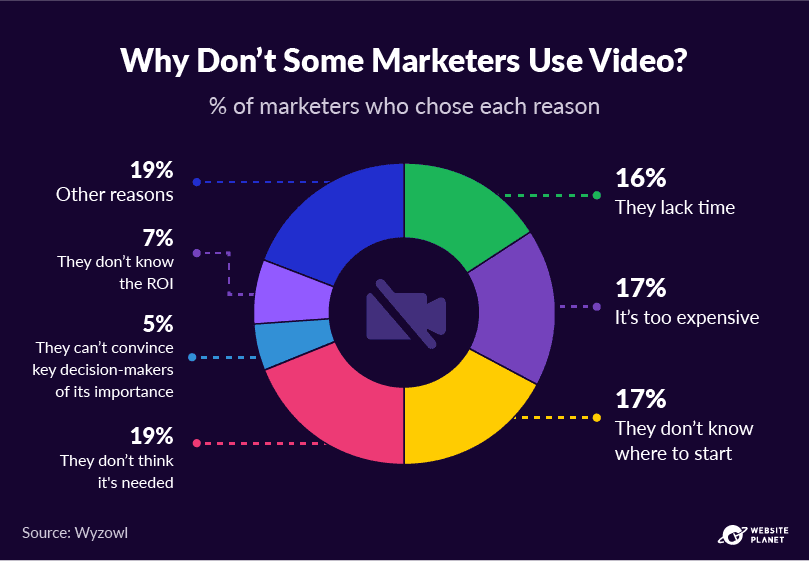
Conversion Rates and ROI of Video Marketing
- Marketers report that video drives 48% more conversions than any other type of content in 2025.
- Product demo videos have an average conversion rate of 34%, outperforming written product descriptions by nearly double.
- Landing pages with embedded video see a 21% increase in time-on-site and a 32% lift in lead generation.
- Explainer videos are the most commonly created content type, used by 74% of marketing teams in 2025.
- Email campaigns that include video experience a click-through rate boost of 300%.
- 83% of marketers say video helps them generate more qualified leads.
- Companies that use video in their sales outreach see a 2x increase in response rates.
- Testimonial videos are now the third-highest performing content type in terms of ROI.
- Interactive videos (clickable CTAs, decision trees, etc.) have a 52% engagement rate, especially in e-commerce.
- 86% of businesses report that video has directly improved their revenue.
The Impact of Video
- 88% of video marketers say video has improved user understanding of their product or service.
- Adding video to blog posts increases organic traffic by 55%, on average.
- YouTube remains the top platform for educational content, with over 2.7 billion monthly users in 2025.
- Social video generates 1200% more shares than text and image content combined.
- 87% of consumers say video content has convinced them to buy a product.
- Video testimonials are trusted three times more than written reviews by potential buyers.
- Video is 53x more likely to rank on the first page of Google compared to text-only content.
- 65% of executives visit a brand’s website after watching a video about their services.
- Videos used in customer support reduce support calls by 24%, freeing up service teams.
- The average session duration increases by 47% when a video is present on a webpage.
Top Challenges in Creating Video Content for Businesses
- 30.6% of marketers say their biggest hurdle is the lack of in-house expertise and resources, making video production a major operational gap.
- 26.7% struggle with coming up with creative ideas, highlighting a need for more strategic or inspired content planning.
- 23.8% face budget limitations, showing that financial constraints still significantly affect video marketing efforts.
- 18.9% report difficulty in measuring ROI or success, pointing to analytics and performance tracking as weak spots.
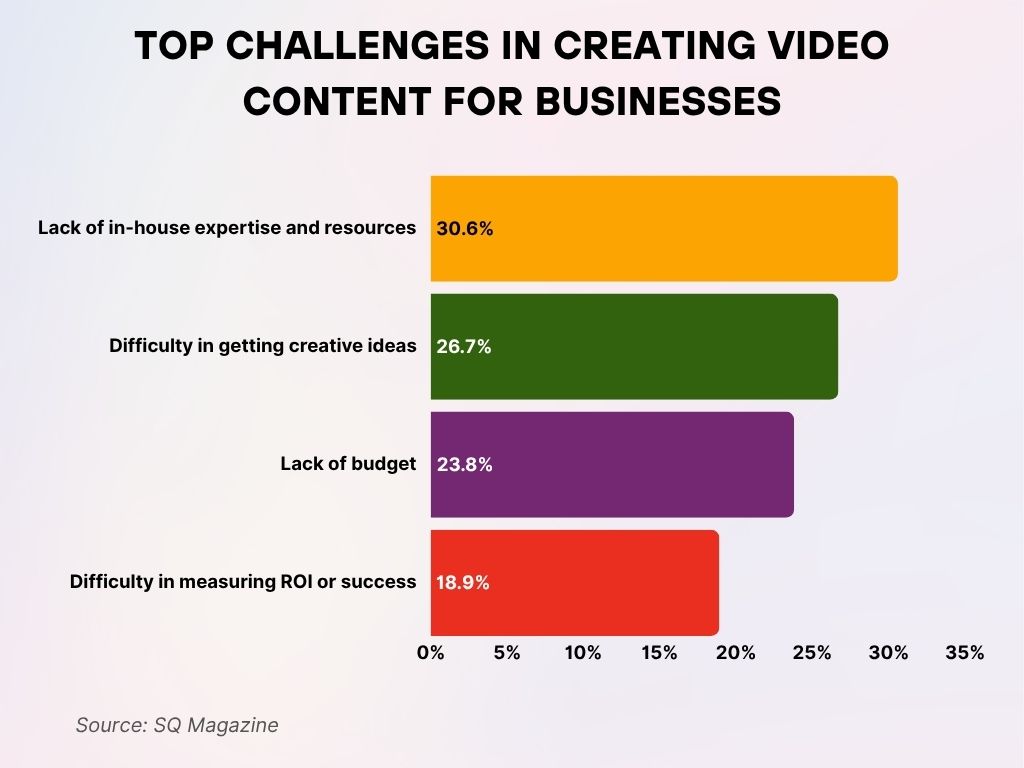
Mobile vs Desktop Video Marketing Effectiveness
- 81% of video views in 2025 occur on mobile devices.
- Videos optimized for a vertical viewing experience have a 58% higher engagement rate on social platforms.
- Desktop viewers tend to watch longer-form content, averaging 7 minutes per session vs. 4 minutes on mobile.
- Autoplay video ads on mobile have a 3.1% click-through rate, higher than desktop’s 2.4%.
- Adaptive video quality streaming on mobile improves viewer retention by 21%.
- 72% of mobile users will not engage with a video if it doesn’t load within 3 seconds.
- Mobile-optimized thumbnails and captions contribute to a 38% increase in watch-through rate.
- Mobile-first platforms (TikTok, Instagram Reels) drive 47% of all video ad engagement in 2025.
- Geotargeted mobile video campaigns show a 19% higher conversion rate compared to generic targeting.
- 61% of shoppers say they’ve been influenced by mobile video ads to make a purchase in-store.
B2B vs B2C Video Marketing Statistics
- 87% of B2C brands rely on video to connect with consumers, focusing heavily on short-form content.
- B2B marketers now produce twice as many webinars, with high registration-to-attendance ratios.
- 69% of B2B buyers say video content influences their decision-making more than whitepapers.
- Case study videos are used by 64% of B2B marketers to build trust with enterprise clients.
- B2C video content generates 4x more social shares, while B2B content excels in lead nurturing.
- LinkedIn video posts by B2B brands have a view-through rate of 58%, the highest among professional platforms.
- B2C brands are more likely to use influencer-led videos; 73% of them do in 2025.
- 85% of B2B marketers plan to increase investment in video content next year.
- B2B companies that use video in email nurturing sequences experience 23% higher lead conversion.
- B2C ecommerce businesses report that video drives 61% of sales on product pages.
Key Video Marketing Statistics for Social Media
- Video posts on social media can generate 48% more views, making them a highly effective engagement tool.
- 73% of users say they prefer watching entertaining videos on their social channels, emphasizing the importance of fun, engaging content.
- YouTube dominates as the top platform for marketers, with 88% choosing it for sharing video content.
- 16% of viewers rely on vlogs for product research, showing their role in influencing buying decisions.
- 17% of businesses integrate live video into their social media marketing campaigns, highlighting its growing adoption.
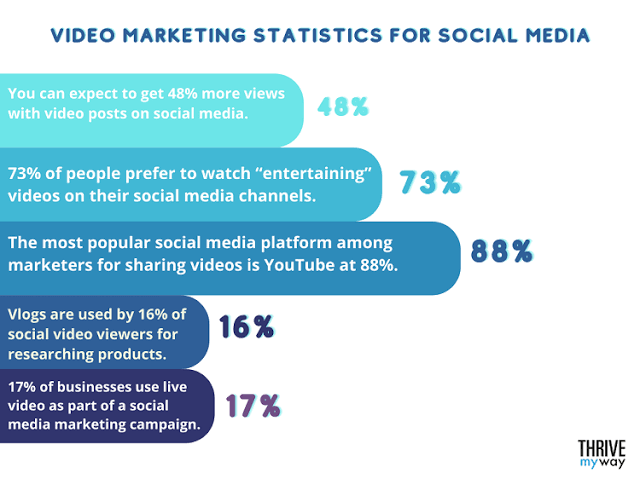
Industry-Specific Video Marketing Usage
- Retail and e-commerce brands report that product videos increase conversion rates by up to 78%.
- In healthcare, explainer videos and virtual consultations have contributed to a 44% rise in patient engagement.
- Education and eLearning platforms use video in 96% of their marketing efforts, with a 5x increase in course sign-ups when video is present.
- Real estate listings with video receive 403% more inquiries than those without.
- The hospitality industry sees a 32% boost in bookings when using immersive destination videos.
- Software companies use onboarding videos to reduce churn by 20% in the first 90 days.
- In finance, 62% of firms use video to simplify complex topics, improving customer satisfaction scores.
- Manufacturing and industrial brands use video demos to increase distributor confidence by 35%.
- Nonprofits see a 17% lift in donations when using emotional storytelling videos.
- Automotive brands report that virtual test drive videos raise intent to purchase by 46%.
Using Video to Your Advantage
- Adding a video to your homepage can boost dwell time by over 2 minutes.
- Marketers who A/B test video content see 19% higher campaign performance on average.
- Embedding a video in your FAQ page reduces bounce rate by 33%.
- Repurposing long videos into short clips increases ROI by 41%.
- Including a CTA within the first 15 seconds improves click-throughs by 12%.
- Personalizing video content by name or company increases open rates by 35% in email marketing.
- Hosting videos on your domain instead of third-party platforms gives you 23% more SEO control.
- Using video heatmaps helps brands identify the drop-off points and optimize engagement.
- Captioned videos are 50% more likely to be watched through to the end, especially on mobile.
- Creating a video content hub on your site can improve internal link structure and boost page views by 28%.
Most Popular Types of Marketing Videos
- 22% of marketers use testimonial videos, making them the top choice for building trust and credibility with audiences.
- Explainer videos come next at 20%, helping simplify complex products or services for better customer understanding.
- 14% each leverage social media and presentation videos, ideal for engaging viewers and showcasing ideas visually.
- Product demo videos are used by 10%, effectively illustrating product functionality and value.
- Sales and teaser videos both account for 9.5%, often used to create urgency and highlight promotions.
- 9% of marketers turn to video ads to boost reach and conversions across digital platforms.
- 8% rely on customer service videos to support users and reduce support ticket volume.
- 7% use videographics, combining visuals and data for informative storytelling.
- 21% of each adopt employee onboarding, customer onboarding, staff training, and app demo videos, reflecting a strong internal and educational use of video content.
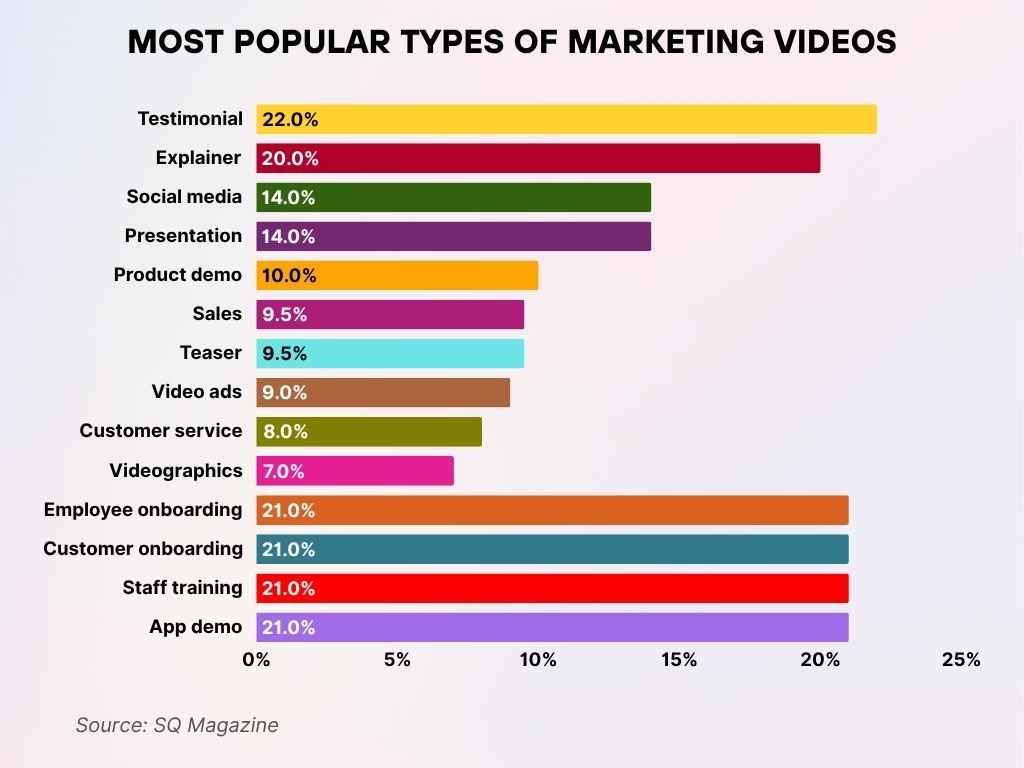
Influence of Video Thumbnails and Captions on Click-Through Rates
- Custom thumbnails generate 42% more clicks than automatically generated ones.
- Thumbnails with human faces perform 38% better in attracting initial interest.
- Adding closed captions increases reach among hearing-impaired users and improves accessibility compliance.
- Captioned videos see a 16% lift in engagement compared to non-captioned ones.
- YouTube videos with branded thumbnails experience 30% higher brand recall.
- Thumbnails with contrasting colors and text overlays outperform muted or cluttered images by 2x.
- Videos with keyword-rich captions rank 11% higher in search results.
- Including captions in multiple languages can expand your reach and increase global engagement by 26%.
- Animated thumbnails are now supported on several platforms and improve click-through rates by 18%.
AI and Personalization in Video Marketing
- 58% of marketers are using AI tools to edit, script, or personalize video in 2025.
- Personalized video campaigns see a conversion rate 3x higher than non-personalized campaigns.
- AI voiceovers and avatars reduce production costs by 37%, especially in B2B training videos.
- Recommendation algorithms drive 70% of video views on platforms like YouTube and TikTok.
- Using AI to auto-generate scene-based CTAs has boosted engagement by 22%.
- Dynamic video ads that adapt to viewer behavior show a click-through rate of 6.5%, compared to the industry average of 2.1%.
- AI editing tools reduce post-production time by over 40%, speeding up campaign launch cycles.
- AI-powered A/B testing tools optimize video content automatically based on viewer behavior.
- Video personalization platforms are being adopted by 65% of Fortune 500 marketers.
- Generative AI tools now help create video scripts, subtitles, and even rough cuts, cutting content creation timelines by weeks.
Most Effective Video Marketing Channels
- YouTube leads as the top video marketing channel, with 78% of companies rating it as the most effective.
- 71% of businesses find Facebook highly effective for video campaigns, maintaining strong engagement.
- Instagram ranks third with 64%, making it a go-to for visual storytelling and short-form content.
- Webinars are used by 61%, ideal for educational and long-form video strategies.
- Interactive video and X/Twitter are both favored by 60% of marketers, showing the rise of engaging and conversational formats.
- 59% use LinkedIn for video marketing, especially in B2B sectors.
- Facebook Live attracts 57%, reflecting the value of real-time interaction.
- Snapchat (56%) and TikTok (52%) remain strong with younger audiences and short-form formats.
- 360-degree videos are effective for 51%, offering immersive experiences.
- Virtual reality (VR) is gaining traction, used effectively by 49% of companies.
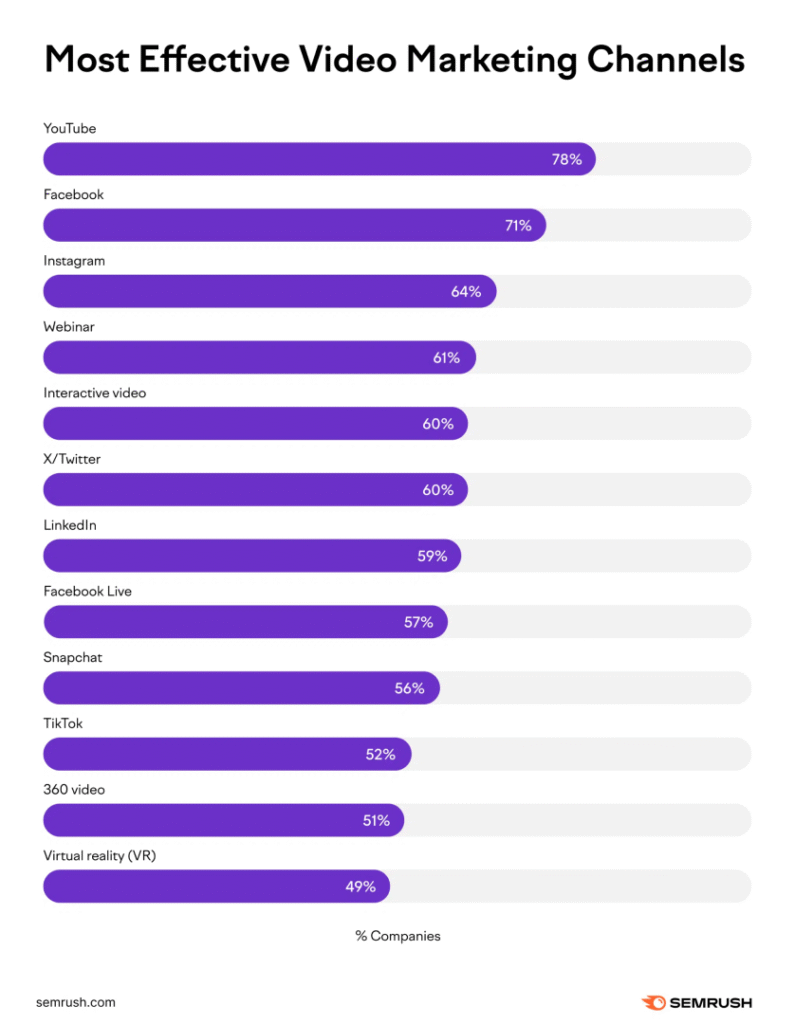
Recent Developments in Video Marketing
- Shoppable video content is becoming mainstream, driving a +60% lift in mobile purchases.
- 2025 has seen a surge in interactive livestream shopping events, particularly on TikTok and Amazon Live.
- 360-degree videos and AR integration are now supported in over 40% of marketing campaigns in travel and real estate.
- Virtual influencers generated via AI are starring in video ads, with engagement rates rivaling human creators.
- Brands are investing more in YouTube Shorts, which now account for 38% of the platform’s ad revenue.
- Real-time video analytics now allow for instant campaign adjustments, increasing agility.
- Blockchain-based video tracking is emerging, giving marketers more transparent metrics on view counts and ad fraud prevention.
- Marketers are expanding into voice-driven video search, improving discoverability on smart devices.
- Video localization and dubbing tools powered by AI are used by 72% of global brands.
- Brands report that video podcasting is their fastest-growing content format in 2025, up by 29% YoY.
Conclusion
Video is no longer just part of the digital marketing mix, it is the heartbeat of how consumers discover, evaluate, and trust brands in 2025. From global adoption to niche personalization powered by AI, video has evolved into a data-driven, conversion-rich tool that spans industries, devices, and demographics.
Whether you’re a scrappy startup or an enterprise brand, the message is clear: if you’re not leveraging video, you’re already behind. Now’s the time to experiment, invest, and scale smartly.







